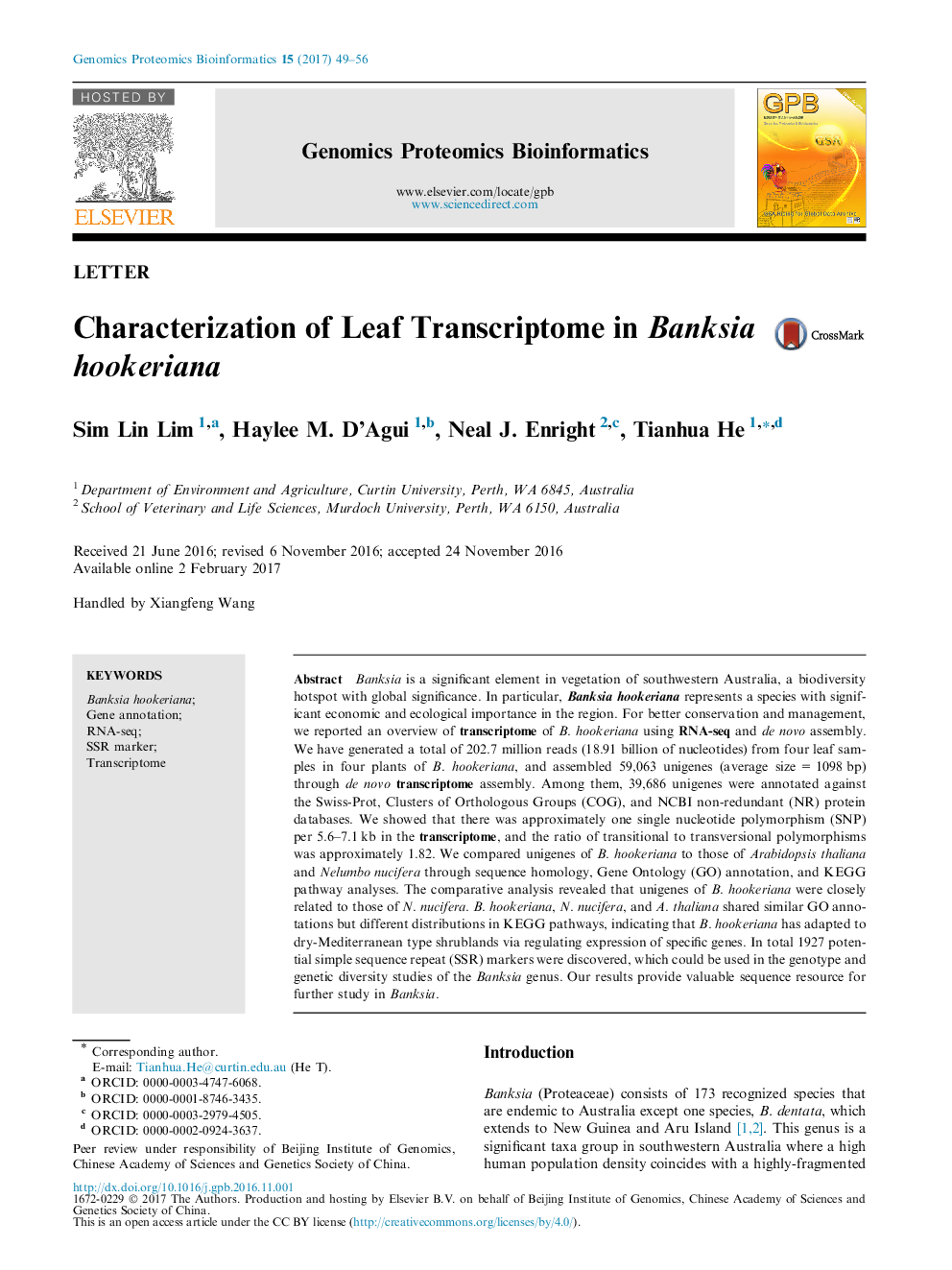| Article ID | Journal | Published Year | Pages | File Type |
|---|---|---|---|---|
| 5590320 | Genomics, Proteomics & Bioinformatics | 2017 | 8 Pages |
Abstract
Banksia is a significant element in vegetation of southwestern Australia, a biodiversity hotspot with global significance. In particular, Banksia hookeriana represents a species with significant economic and ecological importance in the region. For better conservation and management, we reported an overview of transcriptome of B. hookeriana using RNA-seq and de novo assembly. We have generated a total of 202.7 million reads (18.91 billion of nucleotides) from four leaf samples in four plants of B. hookeriana, and assembled 59,063 unigenes (average size = 1098 bp) through de novo transcriptome assembly. Among them, 39,686 unigenes were annotated against the Swiss-Prot, Clusters of Orthologous Groups (COG), and NCBI non-redundant (NR) protein databases. We showed that there was approximately one single nucleotide polymorphism (SNP) per 5.6-7.1 kb in the transcriptome, and the ratio of transitional to transversional polymorphisms was approximately 1.82. We compared unigenes of B. hookeriana to those of Arabidopsis thaliana and Nelumbo nucifera through sequence homology, Gene Ontology (GO) annotation, and KEGG pathway analyses. The comparative analysis revealed that unigenes of B. hookeriana were closely related to those of N. nucifera. B. hookeriana, N. nucifera, and A. thaliana shared similar GO annotations but different distributions in KEGG pathways, indicating that B. hookeriana has adapted to dry-Mediterranean type shrublands via regulating expression of specific genes. In total 1927 potential simple sequence repeat (SSR) markers were discovered, which could be used in the genotype and genetic diversity studies of the Banksia genus. Our results provide valuable sequence resource for further study in Banksia.
Related Topics
Life Sciences
Biochemistry, Genetics and Molecular Biology
Genetics
Authors
Sim Lin Lim, Haylee M. D'Agui, Neal J. Enright, Tianhua He,
